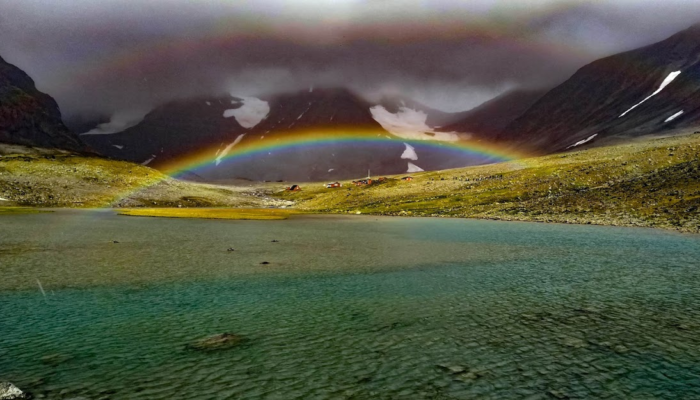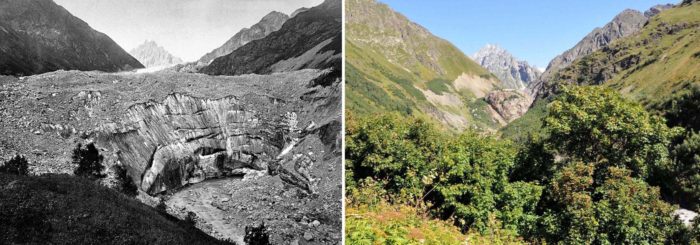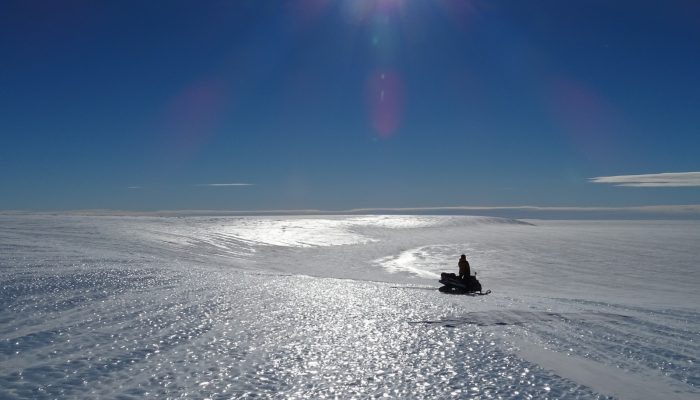This week, we are interviewing Dr Marie Dumont. At the European Geosciences Union (EGU) general assembly in 2019, Marie was awarded the Arne Richter Award for Outstanding Early Career Scientist. Marie is currently a research team leader and deputy scientific director for the Snow Research Centre (part of Centre National de Recherches Meteorologiques, Météo-France & Le Centre national de la Rec ...[Read More]
Surviving in cold environments: from microbes under glaciers to queer scientists in the current social context

On the 5th of July we will celebrate the International Day of LGBTQ+ (lesbian, gay, bisexual, transsexual, queer, and people that do not identify themselves as cis and/or straight) People in Science, Technology, Engineering, and Maths (STEM). Many people will ask: “Why is this day important?” Being a queer scientist in particular, and a queer person in general, can sometimes reminds us of how livi ...[Read More]
Image of the Week – Looking to the past for answers
We’re only just really starting to comprehend the state and fate of Himalayan glaciers due to a scarcity of research along the monumental mountain range. Climbers and scientists have been observing these lofty glaciers since the 1900s. However, is that looking back far enough? Glacier moraines, featuring in this Image of the Week, can reveal change extending back thousands of years. You may look a ...[Read More]
An interview with Jenny Turton, early-career representative for the cryo-division of the EGU
The European Geophysical Union (EGU) has a number of scientific divisions or themes, such as cryosphere, atmospheric sciences and geodesy. Each division has a representative for early career scientists, and often a team of scientists who write and edit blogs and organise events. Today, Jenny Turton, the new representative for the cryo-division, explains a bit more about the role and what she hope ...[Read More]
Image of the Week – Unravelling the mystery of the 2017 Weddell Polynya
The mysterious appearance and disappearance of the Weddell Polynya, a giant hole in the ice, has long puzzled scientists. Recent work reveals that it is tightly tied to energetic storms. Read on to find out more… The eastern side of the Weddell Sea is a region known for its low concentration of sea ice due to the presence of a seamount, an underwater plateau called the Maud Rise. The seamount infl ...[Read More]
Climate Change & Cryosphere – Caucasus Glaciers Receding

The Tviberi Glacier valley is located in the Svaneti Region – a historic province of the Georgian Caucasus. Between 1884 and 2011, climate change has led to a dramatic retreat of the ice in this valley. Other glaciers in the Greater Caucasus evolved in a similar way in past decades. We investigated glaciers and their changes both in-situ and with remote sensing techniques in the 53 river bas ...[Read More]
Image of the Week – The GReenland OCEan-ice interaction project (GROCE): teamwork to predict a glacier’s future
The GROCE project, funded by the German Ministry for Education and Research (BMBF), takes an Earth-System approach to understand what processes are at play for the 79°N glacier (also known as Nioghalvfjerdsfjorden), in northeast Greenland. 79°N is a marine-terminating glacier, meaning it has a floating ice tongue (like an ice shelf) and feeds into the ocean. Approximately 8% of all the ice contain ...[Read More]
Image of the Week – The Lost Meteorites of Antarctica…

When most people think of Antarctica, meteorites aren’t the first things that come to mind. Perhaps they imagine the huge ice shelves, the desolate interior, or perhaps penguin colonies near one of the scientific bases — but usually not meteorites. So why is our project looking for meteorites in Antarctica, and besides, aren’t they all lost until they are found? Let’s start with the A ...[Read More]
Image of the Week – Who let the (sun)dogs out?
How peaceful it is to contemplate the sky … This is especially true of polar northern or southern skies where the low temperatures can engender unique light phenomena. We often tend call them all, wrongly, sundogs, but in fact, many more phenomena exist. To list a few, you can observe a parhelic circle, a 22° halo, a pair of sun dogs, a lower tangent arc, a 46° halo, a circumzenithal arc, a parry ...[Read More]
Image of the Week – Kicking the ice’s butt(ressing)
Changes in the ice shelves surrounding the Antarctic continent are responsible for most of its current contribution to sea-level rise. Although they are already afloat and do not contribute to sea level directly, ice shelves play a key role through the buttressing effect. But which ice shelf regions are most important for this? The role of ice-shelf buttressing In architecture, the term “buttress” ...[Read More]
